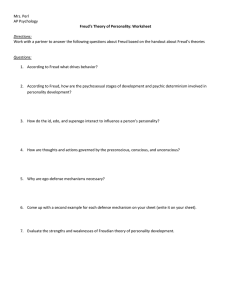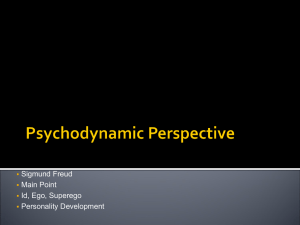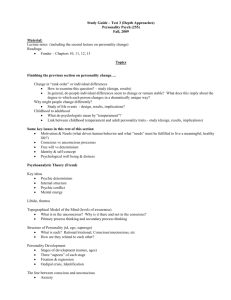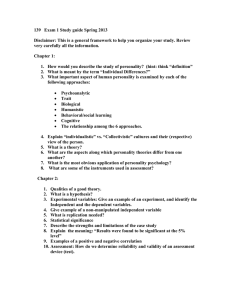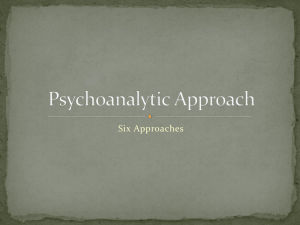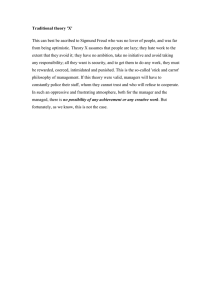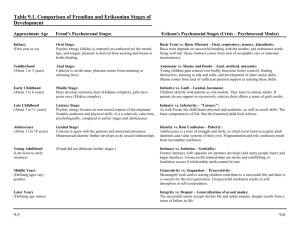Sigmund Freud - Personality Development and
advertisement
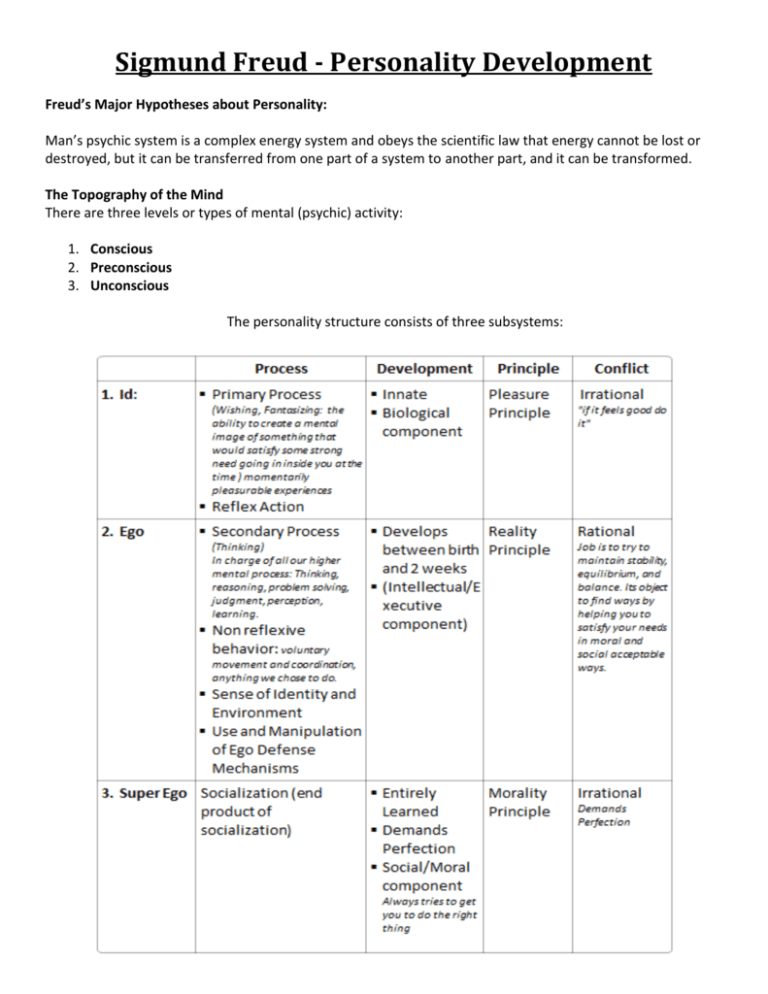
Sigmund Freud - Personality Development Freud’s Major Hypotheses about Personality: Man’s psychic system is a complex energy system and obeys the scientific law that energy cannot be lost or destroyed, but it can be transferred from one part of a system to another part, and it can be transformed. The Topography of the Mind There are three levels or types of mental (psychic) activity: 1. Conscious 2. Preconscious 3. Unconscious The personality structure consists of three subsystems: The Topography of the Mind Before Sigmund Freud introduced the “Iceberg Metaphor”, it was generally believed that the actions of people were primarily influenced by conscious thought and rational choices, made in relation to present situations. Freud contended that the conscious thought and volitional behavior that the person is aware of constituted only a small portion of the person’s ongoing “day to day” experiences, and that the major influences on both conscious and thinking and observable behavior were unconscious, irrational, and historical, and derived from, multiple layers of the “Psychic Apparatus“, with each layer influencing those layers above it. The following represents an illustration of the topographic model of the mind, the various levels of mental functioning, and the elements that comprise the components of mental functioning.

